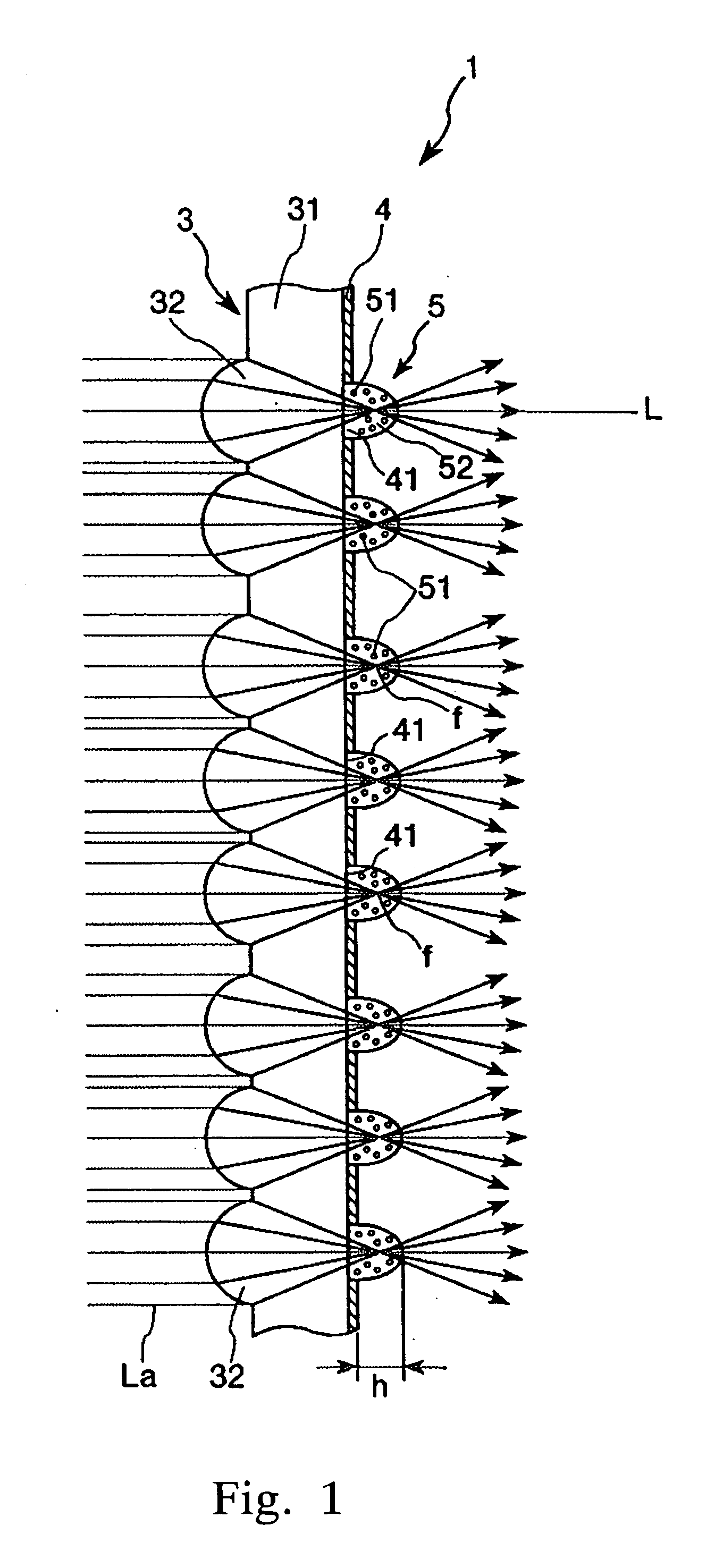Method of manufacturing a screen member for a transmission screen, a screen member for a transmission screen, a transmission screen and a rear projection
a technology for transmission screens and screen members, which is applied in the direction of instruments, television systems, lenses, etc., can solve the problems of low light use efficiency of transmission screens, small angle of view, and degree of extinction, and achieve excellent angle of view characteristics and light use efficiency.
- Summary
- Abstract
- Description
- Claims
- Application Information
AI Technical Summary
Benefits of technology
Problems solved by technology
Method used
Image
Examples
example
Example 1
[0183] A substrate with concave portions for microlenses equipped with concave portions for microlenses was manufactured, and then a microlens substrate was manufactured using the substrate with concave portions for microlenses in the following manner.
[0184] First, a soda-lime glass substrate having a rectangle of 1.2 m×0.7 m and a thickness of 4.8mm was prepared.
[0185] The substrate of soda-lime glass was soaked in cleaning liquid containing 4 wt % ammonium hydrogen difluoride and 8 wt % hydrogen peroxide to carry out a 6 μm etching process, thereby cleaning its surface.
[0186] Then, cleaning with pure water and drying with nitrogen (N2) gas (for removal of pure water) were carried out.
[0187] Next, chromium films (a mask and a rear face protective film) each having a thickness of 0.03 μm were formed on the soda-lime glass substrate by means of a sputtering method. Namely, a mask and a rear face protective film each made of a chromium film were formed on both surfaces o...
example 2
[0214] The transmission screen was manufactured in the manner similar to that in Example 1 except that each of the mask and the rear face protective film was formed as the chromium oxide film. In this case, the mask and the rear face protective film were formed using a spattering method. The thickness of the chromium oxide film was 0.03 μm.
example 3
[0215] The transmission screen was manufactured in the manner similar to that in Example 1 except that each of the mask and the rear face protective film was formed as the laminated element of chromium / chromium oxide film (that is, the laminated element in which the chromium oxide was laminated on the outer surface of the chromium). In this case, the mask and the rear face protective film were formed using a spattering method. The thickness of the chromium film was 0.02 μm, and the thickness of the chromium oxide film was 0.02 μm.
PUM
 Login to View More
Login to View More Abstract
Description
Claims
Application Information
 Login to View More
Login to View More - R&D
- Intellectual Property
- Life Sciences
- Materials
- Tech Scout
- Unparalleled Data Quality
- Higher Quality Content
- 60% Fewer Hallucinations
Browse by: Latest US Patents, China's latest patents, Technical Efficacy Thesaurus, Application Domain, Technology Topic, Popular Technical Reports.
© 2025 PatSnap. All rights reserved.Legal|Privacy policy|Modern Slavery Act Transparency Statement|Sitemap|About US| Contact US: help@patsnap.com



